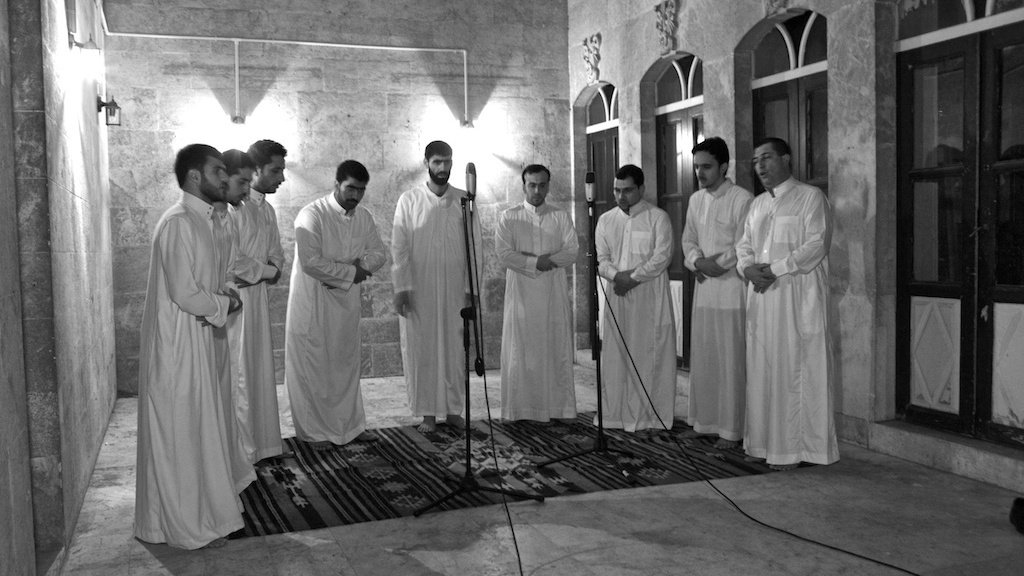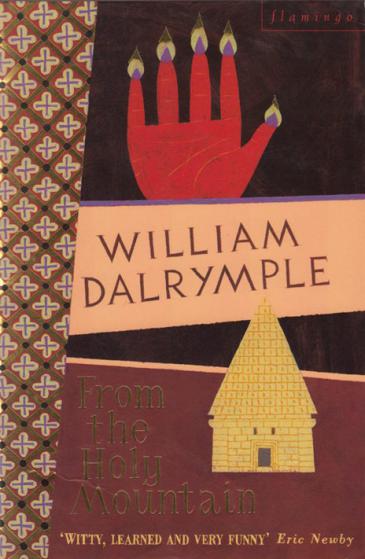The timely involvement of a punk rocker

For someone who has got used to the flood of catastrophic images from Syria, it′s hard to imagine that Syria might actually have looked very different in the past. Not only that, Syria was a country where different communities lived in mutual respect of each other, forming a rich tapestry of cultures and beliefs. Before questions of faith drove a rift between them, Syrians would always emphasise the fact that they all shared the same culture.
When Jason Hamacher first went to Syria in 2006, it was during the aftermath of the Danish Muhammad cartoon controversy. Protests had shaken the country. When he arrived in Syria, the American musician and photographer witnessed a joint TV address by the Archbishop of the Syrian-Orthodox Church and the Grand Mufti of Syria. Both of them had joined hands to urge people to calm down.
Later, Hamacher learnt that the two religious leaders had been friends for more than thirty years. ″That was when I understood that the inter-religious dynamic in Syria was far more nuanced than we think in the West,″ says Jason Hamacher.
A punk rocker in Syria
Hamacher is most probably the last person to have created a cultural archive of musical recordings, photos and videos, showing us the way Syria used to be. However, the 39-year-old is not an anthropologist, but a punk rock drummer. After two decades of playing in various punk bands in America, Hamacher went to southeast Turkey and read William Dalrymple′s book ″From The Holy Mountain″.

Raised by a Christian minister, he was especially captured by Dalrymple′s description of a Syrian church where ancient Christian chants from the first days of Christianity are still sung on a daily basis. When he asked the British author for recordings of these chants, he got the address of the church in Aleppo. Days later, Hamacher talked to the Archbishop of the Syrian-Orthodox Church in America who said that no one until now had ever professionally recorded these chants.
″I immediately asked the bishop if I could do the recordings,″ says Hamacher. After presenting his project to the Syrian embassy in the US, Hamacher set out for Syria. He would return to the country numerous times until 2010, developing a profound connection with its people.″The deep level of hospitality in Syria really touched my heart. The way people naturally included me into their lives was overwhelming,″ Hamacher recalls.
Hamacher′s recordings in the Syrian-Orthodox church feature chants believed to date back to the year 190. The church in Aleppo is one of the few where this particular chanting – known as the style of Edessa (today′s Urfa) – can still be heard. The chants, which are part of the daily church liturgy, are performed in the Syriac language, which in turn is an Aramaic dialect. ″The first time I heard an Aramaic prayer in a Syriac monastery in Turkey was life-changing,″ Hamacher says.
Reviving Aleppo′s Sufi traditions
In Aleppo, Hamacher also made recordings of Armenian and Chaldean chants. Having spent most of his time with Christians, he set out to learn more about the various Islamic traditions.
He was introduced to the ″Nawa″ Sufi ensemble, a group of musicians who used to gather in the courtyard of a 500 year-old house just outside Aleppo′s souk. Some were members of a traditional Sufi order, others were professional musicians.
Their aim was to recreate the ancient Sufi traditions of Aleppo in the 21st century. The chants, which Hamacher published on his first album ″Nawa”, are particular to the Sufis of Aleppo. Just as with the Syrian-Orthodox chants, no one had ever recorded their singing before.
″As an artist I interacted with the communities in a completely different way than academics or journalists would. I connected to them through art, beauty and stories. I tried to create a bridge between all the academic material on Syria and the people back home who are not interested in that part of the world″, says Hamacher.
When the war broke out in 2011, Hamacher stopped working on anything related to Syria for about two years. ″I didn′t want people to think I was using the war for my work," explains Hamacher. When the war entered the city of Aleppo, things changed for Hamacher. ″People started asking me: you went to Aleppo – so is that what it is like? At that point I knew I had to show them what Syria was really like.″
This is when Jason Hamacher started releasing the recordings under his label ″Lost Origin Sound″. He realised he was most probably the only one on earth who managed to collect all this cultural material during the weeks leading up to the war. Many of the traditions collected within the ″Lost Origin Sound″ project were considered endangered even before the conflict began.
A matter of responsibility
Hamacher′s albums attracted a considerable amount of media attention around the world. He now feels a responsibility towards his friends to represent their Syria, the Syria he came to know – from a cultural perspective, not a political one.
He is currently conducting lecture tours around the US and Europe. Apart from this, he is working on a coffee table book about Aleppo, a city that has lost its entire cultural heritage as a result of the civil war. The archbishop who welcomed Hamacher in Aleppo was kidnapped by terrorists in 2013. Some of the people he worked with have been killed.
Jason Hamacher has already received requests for access to his archives by various cultural organisations that are now planning the reconstruction of Syria. Is it wishful thinking?
Hamacher doesn′t want to lose hope: ″If the people of Dresden can live and laugh in their city now, this can be also possible for Aleppo. I would love to go back one day and show my kids the city.″
Marian Brehmer
© Qantara.de 2015